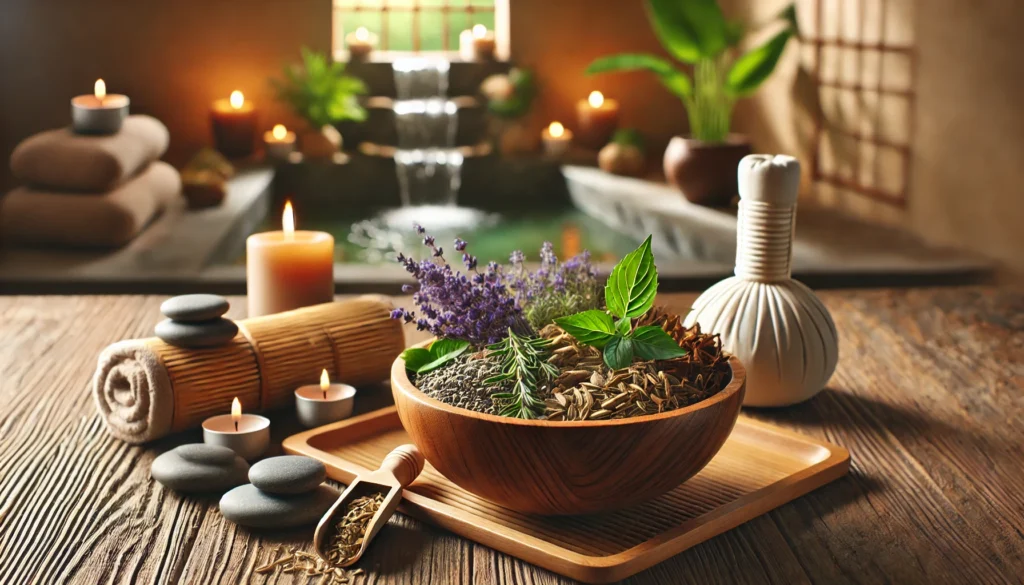Anxiety, in its many forms, is one of the most common and disruptive mental health challenges faced by individuals across the globe. While conventional treatment options such as therapy and medication can be effective, a growing number of people are turning to natural, holistic methods to support mental wellness. This approach not only addresses symptoms but aims to harmonize the mind, body, and spirit, using gentle yet powerful tools such as herbal remedies, mindfulness practices, nutrition, and lifestyle adjustments. This article will explore how to calm anxiety and prevent panic attacks naturally, focusing on scientifically backed solutions and traditional practices that have stood the test of time.
You may also like: Best Herbal Alternatives to Anxiolytics: Natural Remedies for Anxiety Relief
For those who ask, “how do you calm down from an anxiety attack?” or search for ways to stop a panic attack fast, the answer lies in understanding the mechanisms of anxiety and learning sustainable coping methods. Anxiety is not merely a fleeting feeling of nervousness; it is often rooted in deeper physiological and psychological imbalances. By integrating both ancient herbal wisdom and modern holistic science, individuals can discover how to reduce anxiety immediately and foster long-term resilience. These strategies are especially valuable for those seeking to avoid long-term reliance on medication or those who want to complement their existing treatment plans with supportive practices.
The techniques and insights shared here are aligned with the principles of EEAT (Experience, Expertise, Authoritativeness, and Trustworthiness). Each remedy and practice is discussed with medical accuracy, and where applicable, supported by research. We will explore how to help someone with an anxiety attack in real-time, the importance of understanding panic disorder and how to cope, and methods to calm anxiety that are accessible, safe, and effective. Whether you’re facing occasional stress or chronic panic attacks, the information in this article can empower you with the tools to regain control and cultivate inner peace naturally.

Understanding Anxiety and Panic Attacks: Roots, Symptoms, and Impact
Before diving into remedies and techniques, it’s essential to understand what anxiety and panic attacks truly are, how they differ, and why they occur. Anxiety is a broad term encompassing conditions such as generalized anxiety disorder (GAD), social anxiety, phobias, and panic disorder. While the specific triggers and symptoms vary, all forms of anxiety share a common thread: the body’s stress response is activated in a way that is disproportionate to the actual threat or trigger.
Panic attacks are acute episodes of intense fear or discomfort that develop suddenly and often without clear cause. They can be so overwhelming that individuals may believe they are having a heart attack or losing control. The physiological symptoms—racing heart, shortness of breath, chest pain, dizziness, chills, and nausea—are real and frightening, even if the danger is not. For those wondering how to calm down from a panic attack, understanding that these symptoms, though terrifying, are not life-threatening is the first step toward managing them.
There is a growing body of evidence that links chronic anxiety and panic disorders to imbalances in neurotransmitters like serotonin and GABA, inflammation in the brain, gut microbiome dysfunction, and poor stress regulation. This understanding opens the door to a more holistic view of mental health, one that sees the brain not as an isolated organ but as part of a complex network connected to the nervous system, immune system, digestive tract, and endocrine system. Knowing how to calm anxiety panic attacks often involves supporting all of these systems simultaneously, which is where holistic and herbal approaches shine.
For people who experience repeated panic episodes, knowing how to stop a panic attack fast is crucial, but so is developing long-term strategies that teach the body to interpret stress differently. Learning how to avoid panic attacks altogether may not be possible in every case, but reducing their frequency and intensity is achievable through consistent, holistic practices. Importantly, this journey begins with self-awareness—recognizing the onset of symptoms, identifying triggers, and cultivating responses that soothe rather than escalate.

Herbal Remedies for Anxiety and Panic: Nature’s Calming Pharmacy
Herbs have been used for centuries to soothe the nervous system and support emotional well-being. Modern research is beginning to validate the efficacy of many traditional herbal remedies for anxiety and panic. These botanicals offer gentle, often side-effect-free alternatives for those looking to support mental health without prescription medications. While herbal remedies should not replace medical treatment for severe cases, they can play a significant complementary role.
One of the most well-known adaptogens for anxiety is ashwagandha (Withania somnifera), a root used in Ayurvedic medicine that helps the body adapt to stress and supports hormonal balance. Studies have shown that ashwagandha may lower cortisol levels and reduce anxiety symptoms, making it an excellent choice for those looking to learn how to calm anxiety naturally. Its calming effects are subtle yet powerful, and it tends to work best when taken consistently over time.
Another herbal ally is passionflower (Passiflora incarnata), which has been used to manage nervous restlessness and promote sleep. Passionflower is particularly useful for those experiencing racing thoughts or difficulty winding down, especially in the evening. For individuals wondering how to reduce anxiety immediately, a tincture or tea made from passionflower may provide fast-acting relief without sedation.
Valerian root (Valeriana officinalis) is another time-honored herb often used in cases of insomnia and nervous tension. While its flavor and aroma may be off-putting to some, its ability to help soothe anxiety attacks is well documented. Valerian acts as a mild sedative, enhancing GABA activity in the brain, which can be especially useful during times of acute distress. It may be a helpful component for those developing panic attack coping skills.
Lemon balm (Melissa officinalis), a member of the mint family, is another gentle herb known for its calming and mood-enhancing effects. It’s a great option for those exploring ways to calm anxiety attack symptoms during the day without feeling drowsy. Chamomile (Matricaria chamomilla) also deserves mention, as it has been shown in clinical trials to reduce generalized anxiety disorder symptoms and improve sleep quality. These herbs can be used individually or in combination as teas, tinctures, capsules, or essential oils, offering a wide range of application methods for calming both body and mind.
When integrating herbal remedies into a wellness plan, consistency and proper dosing are key. It’s also wise to consult with a qualified herbalist or integrative healthcare provider, especially if you’re taking other medications. Some herbs can interact with pharmaceuticals, so informed, personalized guidance helps ensure safety and effectiveness. Knowing how to calm anxiety and prevent panic attacks naturally is not just about what you take, but how and when you take it, as well as how it fits into a broader framework of healing.
Frequently Asked Questions (FAQ): How to Calm Anxiety and Prevent Panic Attacks Naturally
1. What’s an overlooked method for how to calm down from an anxiety attack in public spaces? Many people struggle with how to calm down from an anxiety attack when they’re in public, especially because they feel they can’t show signs of vulnerability. One lesser-known but highly effective method involves engaging the vagus nerve through subtle humming or silent singing. These actions stimulate the parasympathetic nervous system, promoting calm without drawing attention. Carrying a small essential oil roller with calming scents like lavender or bergamot can also offer sensory grounding when discreetly applied to pulse points. Combining these techniques with slow, conscious breathwork offers a private but powerful way to manage symptoms without needing to leave the environment entirely.
2. How do you reduce anxiety immediately when you can’t change your environment? Learning how to reduce anxiety immediately is especially important when you’re in a fixed environment, such as at work or during travel. One advanced approach involves applying acupressure to specific points, such as the Shen Men point on the ear or the Pericardium 6 point on the inner wrist. These points are believed to interrupt stress signals in the body and redirect energy toward calm. Simultaneously, using internal dialogue strategies—such as mentally rehearsing affirmations like “I am grounded” or “This will pass”—can reframe the brain’s interpretation of the threat. These practices, when paired with controlled nasal breathing, form an effective trio for instant relief.
3. What are some ways to calm anxiety panic attacks through nighttime rituals? Understanding how to calm anxiety panic attacks before bed is crucial for people who struggle with sleep disruptions due to their condition. Evening rituals such as contrast hydrotherapy (alternating between warm and cold showers), using weighted blankets, or incorporating binaural beats into your wind-down routine can signal the nervous system to transition into a parasympathetic state. Keeping a worry journal to unload racing thoughts before sleep can also be a powerful preventative practice. When performed consistently, these habits rewire your body to associate nighttime with safety, reducing both the likelihood and intensity of panic episodes. This offers a foundational layer of support for those trying to avoid panic attacks altogether.
4. Are there any specific techniques for how to help someone with anxiety attack symptoms without escalating their fear? Supporting someone in distress requires understanding how to help someone with anxiety attack episodes without unintentionally intensifying their discomfort. The key is co-regulation—remaining calm yourself so your presence serves as a stabilizing anchor. Rather than saying, “You’re okay,” which might feel invalidating, try offering cues like, “I’m here with you—let’s breathe together.” Encourage grounding by gently asking what they can see or feel, which also introduces ways to calm a panic attack without demanding verbal processing. Avoid overly instructive behavior and instead offer soft guidance, matching their energy and breathing pace. This creates a container of safety that allows the other person to move through the episode more smoothly.
5. What long-term strategies exist for how to eliminate panic attacks forever without medication? Although the goal of learning how to eliminate panic attacks forever is ambitious, building neurological resilience over time can significantly reduce their frequency and severity. Polyvagal theory suggests that creating safety through daily micro-interventions—such as singing, cold exposure, eye-gazing with loved ones, and play—can tone the vagus nerve and shift your baseline nervous system state. Additionally, addressing unresolved trauma through modalities like somatic experiencing or EMDR can help clear the root causes of persistent fear responses. Over time, integrating these with lifestyle medicine—such as anti-inflammatory diets, stable circadian rhythms, and purposeful social engagement—can create a holistic buffer against panic. This approach aligns with anxiety how to cope without medication frameworks, particularly for individuals seeking comprehensive wellness strategies.
6. How can panic attack exercise support recovery without overstimulating the nervous system? The idea of panic attack exercise might sound paradoxical, but movement tailored to your nervous system’s state can be extremely therapeutic. During an anxiety episode or afterward, engaging in rhythmic, bilateral motion like walking, swaying, or gentle bouncing can help discharge excess energy without overwhelming your body. Unlike high-intensity workouts, these movements are soothing and help re-establish a sense of bodily control. Movement also boosts neurochemical balance, particularly increasing serotonin and endorphins, which are key in how to stop anxiety attack fast. Over time, integrating consistent, moderate exercise also becomes a form of exposure therapy, demonstrating to your body that it can endure and recover.
7. Are there specific panic attack techniques for high-performing professionals with unpredictable schedules? High-stress careers often demand panic attack techniques that are portable, efficient, and discreet. Professionals who need ways to calm anxiety attack symptoms in the moment might benefit from using wearable biofeedback devices that track heart rate variability and prompt regulation when needed. Additionally, micro-meditation—such as a 90-second mindfulness reset between meetings—can interrupt spiraling thoughts without requiring a full break. Keeping emergency grounding objects, like a textured worry stone or peppermint lozenge, can offer quick sensory redirection. For long-term success, it’s vital to develop panic disorder how to cope protocols that fit your schedule without disrupting productivity.
8. What’s a nuanced view of how to distract yourself during a panic attack that avoids emotional suppression? Many people assume that learning how to distract yourself during a panic attack means simply avoiding the feelings, but this can lead to emotional bypassing. A more integrative view involves using mindful distraction—activities that gently shift your focus while honoring the emotion. This might include tactile engagement like kneading dough or gardening, which provides embodied awareness while still allowing sensations to move through. Practicing distraction as a form of containment, rather than denial, helps build emotional literacy and self-trust. When done with intention, these strategies become part of larger anxiety attack coping skills that foster empowerment rather than avoidance.
9. Can you stop panic attacks forever by changing your relationship with fear? At the heart of how to stop panic attacks forever is not necessarily erasing fear, but transforming your relationship with it. Most panic stems from fearing the sensations themselves—what’s sometimes called the “fear of fear.” Somatic therapies teach you to experience physical symptoms as information rather than danger, reducing the secondary fear loop that perpetuates attacks. Over time, developing the capacity to stay with discomfort while regulating breath and thought patterns can completely alter how the body interprets stress. This shift is crucial in learning methods to calm anxiety that are sustainable, self-affirming, and neurologically rewiring.
10. What coping techniques for panic attacks are especially useful during times of global uncertainty or collective stress? During global crises or periods of collective stress, coping techniques for panic attacks must expand beyond the personal to include the relational and environmental. Practices like community storytelling, collective breathing circles, or shared art-making can regulate nervous systems through co-regulation. The use of herbal remedies, calming rituals, and boundary-setting becomes even more vital when the external world feels unsafe. Understanding how to end an anxiety attack during these times requires cultivating both inner stillness and external support systems. Importantly, saying “sorry for panicking there” should be met with compassion rather than shame—it’s a human response to overwhelming stimuli, not a personal flaw.

Breath, Mind, and Movement: Holistic Techniques for Calming Anxiety and Interrupting Panic
While herbs offer biochemical support for a stressed nervous system, physical and mental practices provide equally important tools for grounding, centering, and self-regulating during anxious episodes. One of the most accessible and evidence-based methods is conscious breathing. Techniques such as box breathing, 4-7-8 breathing, and diaphragmatic breathing can help interrupt the stress response and signal to the brain that it is safe. For anyone searching for how to quickly stop an anxiety attack, these breathwork tools can be lifesavers.
Mindfulness meditation and body-based practices like yoga and tai chi also play a vital role in restoring emotional balance. These techniques teach the brain to become less reactive and more present, helping individuals recognize that thoughts are not threats. Over time, this can rewire the brain’s response to stress and create a more spacious, resilient inner environment. For those seeking ways to calm a panic attack without medication, these techniques offer deeply empowering alternatives.
Movement is another powerful regulator of mood and nervous system health. Engaging in regular physical activity—whether walking, dancing, or strength training—helps metabolize stress hormones, increases endorphin production, and improves sleep. One often-overlooked method is panic attack exercise, which refers not to intense workouts but to gentle, targeted movements during or after an episode to release tension and regulate breathing.
When panic symptoms arise, grounding techniques such as the 5-4-3-2-1 method (identifying five things you see, four you feel, three you hear, two you smell, and one you taste) can bring immediate relief. These tools are especially helpful for those learning how to distract yourself during a panic attack. Rather than resisting the sensations, grounding invites you to engage with the present moment in a way that reorients the brain and body toward safety.
natural stress relief techniques, calming herbal supplements, holistic anxiety treatment, adaptogenic herbs for stress, mindfulness practices for anxiety, natural remedies for panic disorder, integrative mental health, nervous system regulation, herbal support for mental wellness, alternative treatments for anxiety, soothing herbal teas, grounding techniques for anxiety, mind-body healing, breathwork for emotional health, anti-anxiety herbs, mental health without medication, plant-based anxiety relief, natural calming methods, stress-reducing lifestyle habits, emotional wellness strategies
Further Reading:
Natural Remedies to Alleviate Anxiety
How to treat anxiety naturally
10 Natural Ways to Reduce Anxiety
Disclaimer
The information contained in this article is provided for general informational purposes only and is not intended to serve as medical, legal, or professional advice. While NewsHealthWatch strives to present accurate, up-to-date, and reliable content, no warranty or guarantee, expressed or implied, is made regarding the completeness, accuracy, or adequacy of the information provided. Readers are strongly advised to seek the guidance of a qualified healthcare provider or other relevant professionals before acting on any information contained in this article. NewsHealthWatch, its authors, editors, and contributors expressly disclaim any liability for any damages, losses, or consequences arising directly or indirectly from the use, interpretation, or reliance on any information presented herein. The views and opinions expressed in this article are those of the author(s) and do not necessarily reflect the official policies or positions of NewsHealthWatch.

